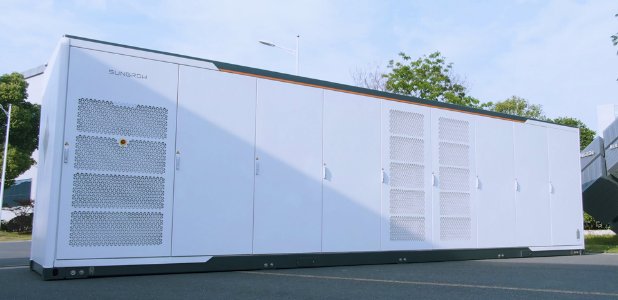PVTIME – The global market sees an increased demand for battery storage facilities as they can tackle the volatility and intermittence of renewable energy. The BloombergNEF forecasts that the global energy storage market will surge in the coming decades with the installation capacity set to grow 2000% by 2030.

Among many energy storage system (ESS) solutions, the liquid cooled ESS attracts much attention due to the advanced thermal management technology, and other features including a minimum footprint and intelligent operation and maintenance (O&M).
Though companies from different fields strive to roll out their liquid cooled ESS, it’s challenging to find your ideal liquid cooled ESS without professional instructions. Below you will find some insights that may inspire project stakeholders and decision-makers.
Batteries: born with inconsistency and the “bucket effect”
Lithium-ion batteries are an essential component of the energy storage system; however, due to electrochemical instability, the consistency of the battery is relative while inconsistency is absolute. The battery inconsistency exists inherently, and the inconsistency continues to expand when multiple batteries operate in parallel and battery temperature difference is increased. Thus, the battery capacity incongruity occurs when cells with different initial capacities are used together, which reduces the charging and discharging efficiency of the entire battery storage system. New liquid-cooled energy storage system mitigates battery inconsistency with advanced cooling technology but cannot eliminate it.
As a result, the energy storage system is equipped with some control systems including a battery management system (BMS) and power conversion system (PCS) to ensure battery balancing. The BMS can monitor and calculate battery data, and transfer data to the PCS. As another “brain” of the battery storage system, PCS controls the charging and discharging capacity and ensures maximum efficiency.
The “bucket effect” means if one of the boards in the bucket is damaged, it is not the longest board that determines how much water a bucket holds, but the shortest one.
This theory suits the traditional battery storage system when thousands of batteries are controlled by one PCS. A lithium-ion battery pack is likened to a bucket containing water, the lithium-ion cells that make up the battery pack are the bucket boards, and the cell with the worst performance determines the overall performance of the battery pack. The “bucket effect” in batteries will intensify over time, which will eventually affects battery system efficiency and cut the project’s return on investment.
Combatting the “bucket effect” and ensuring higher efficiency
Sungrow’s new cluster controller of the liquid cooled ESS well addresses the “bucket effect”. The cluster controller can charge and discharge battery racks individually. It identifies the battery status in milliseconds, and dynamically controls the charging and discharging power of each cluster according to the status of each battery cluster, guaranteeing batteries with different capacities in the system can be fully charged and discharged, significantly increasing the system’s discharging capacity by 7%.
Apart from getting rid of the “bucket effect”, the new cluster controller is designed to achieve a positive chain effect.
The State of Charge (SOC) of the battery storage is the most important input parameter to reflect the size of lithium battery residual capacity. The SOC calibration allows the alternator to charge the lithium-ion batteries until the end-of-charge criteria have been met. Compared with the traditional manual calibration of battery SOC, the cluster controller can achieve automatic SOC calibration without the downtime and manual calibration.
In addition, with the cluster controller, Sungrow’s liquid cooled ESS supports mixed use of old and new batteries, and battery clusters can operate once being replaced. System capacity expansion will frequently happen if the energy storage demand increases. An additional PCS is not required if the extended capacity is within the power range of the existing PCS. Moreover, the new and old battery systems can be connected to the same PCS, reducing equipment costs.
In addition, the cluster controller contributes to the system’s safety. When short-circuit of a DC bus happens, the short-circuit current of each battery cluster in the energy storage system converges to the short-circuit node, then the instantaneous short-circuit current will be much higher than the rated current — a safety risk is posed. Sungrow’s liquid cooled ESS with the cluster controller can disconnect the circuit between the battery cluster and DC bus, reducing the short-circuit current by 75% and eliminating the risk of equipment damage caused by short-circuiting.
Compliance is the first and uppermost step
Global compliance is the recognized and authoritative proof of a system with high quality, safety and reliable performance. The PowerTitan, Sungrow’s liquid cooled ESS focuses on the utility-scale energy storage market.
Through cutting-edge cell safety, electrical safety and fire suppression safety design, the PowerTitan is in full compliance with the international IEC 63056, IEC 62619, and the North American UL 9540 and UL 9540A. In addition, pairing with the battery system is the turnkey station, which integrates PCS and medium-voltage station. The turnkey station is in full compliance with IEC 62271-202, given the integrated design and strict components selection to ensure the safety of human-beings.
The energy storage system is complex, as knowledge across varied subjects, particularly power electronics, electrochemistry, and grid forming is necessary. Sungrow is one the few of companies that has expertise and practices in these three verticals. As an early entrant in the energy storage sector, Sungrow has hit its annual energy storage system shipment with 3 GWh deployed in 2021. The Company’s liquid cooled ESS solutions were supplied to landmark projects including the 390MWh Texas project, 750MWh projects in Israel, and the largest solar-plus-storage project in Southeast Asia.
As liquid cooled ESS begins to dominate the market in 2022 and beyond, the above-mentioned technical innovations contribute to long-term profitability for stakeholders and secure competitiveness in the market.











